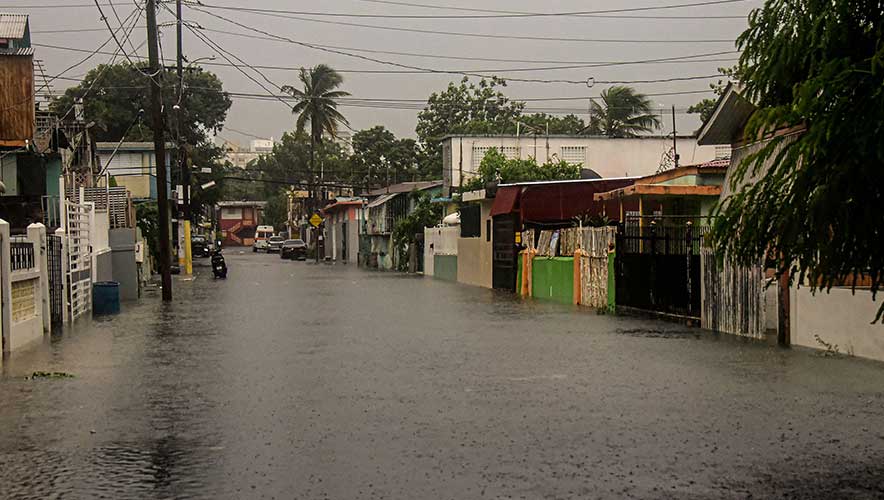Hurricane Fiona Knocks Out Power in Puerto Rico
In 2017, Hurricanes Irma and Maria caused billions of dollars in damage in Puerto Rico and the U.S. Virgin Islands, and recovery from those storms has yet to conclude. But weather doesn’t wait until you’re ready to strike again, and Puerto Rico was hit by Hurricane Fiona over the weekend. The storm knocked out power across the entire island, causing damage that Puerto Rico Governor Pedro Pierluisi called “catastrophic in many areas.” Heavy rainfall and flooding continued across the island all of 18 September.
The hurricane caused at least 12 to 18 inches of rainfall across Puerto Rico, with as much as 30 inches hitting the eastern and southern regions of the island, NPR reported. More than 3 million people lost electricity, and restoring power across the island could take several days, according to Luma Energy, the island’s private electric utility.
The electric situation in Puerto Rico was already tenuous—after Hurricane Maria hit in 2017, 80 percent of the transmission and distribution system was wrecked. It took roughly 11 months to restore power to all customers across Puerto Rico. Recovery is still ongoing.
The U.S. Government Accountability Office (GAO) has been tracking the island’s recovery and the use of government funding, and while the Federal Emergency Management Agency (FEMA) has taken steps to improve its management of disaster recovery programs, there have been gaps between what assistance is available and what Puerto Rico government officials thought was available. Out of $32.2 billion in available funding for projects in response to hurricanes Irma and Maria, approximately $7.7 billion in funding has been expended by the governments of Puerto Rico and the U.S. Virgin Islands. Newly clarified guidance from FEMA is likely to smooth the way for future projects, the GAO noted.
While progress is being made, the GAO reported, challenges continue, including rising costs of projects, difficulties procuring resources for construction, and more.
Most of Puerto Rico is still without power — and likely will be for days — as Hurricane Fiona reaches the Dominican Republic.https://t.co/aMtyOiG0Oe
— NPR (@NPR) September 19, 2022
Storms are not the only threat to Puerto Rico’s power grid, and its unreliability has triggered widespread protests in the past. In 2021, thousands of Puerto Ricans blocked highway traffic to demand the ouster of Luma after widespread blackouts impacted homes, schools, and businesses.
Since 2017, the Puerto Rican government has promised it would be better prepared for the next storm, and they ensured that backup generators were working at hospitals and warehouses were stocked with food, cots, and essential supplies. “But efforts to ensure that the power grid would be better prepared to handle the storm fell short,” NPR reported. As of early 19 September, more than 1 million are without power across the island.
